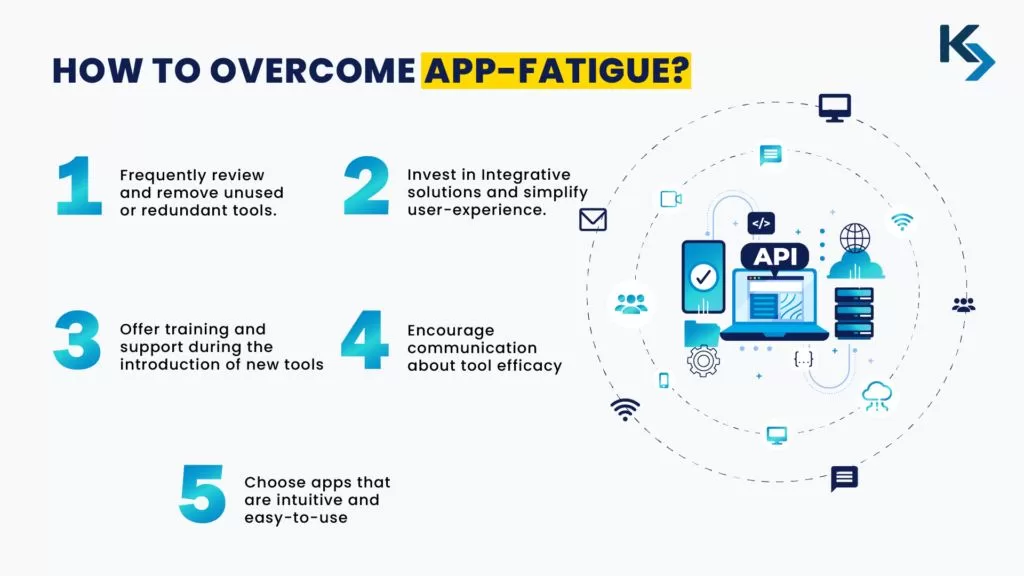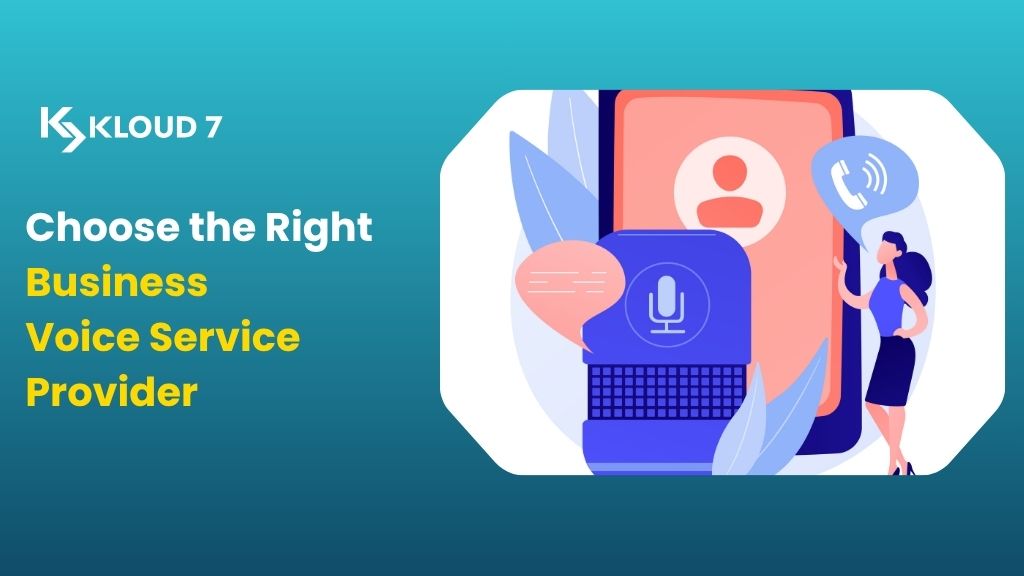In the age of technology, where there’s an app for nearly everything, a modern-day problem emerges; app fatigue. How can we navigate this saturated environment without feeling overwhelmed? The answer lies in unified communications. Let’s dive deeper into this intriguing topic.
What is App-Fatigue?
App fatigue refers to a state of overwhelm and exhaustion experienced by users due to the plethora of applications on their digital devices, particularly smartphones and tablets. With the exponential growth in the number of applications available on various app stores, users often find themselves downloading a multitude of apps for different tasks. Over time, managing, updating, and navigating through these apps can become tedious, leading to cognitive overload. Furthermore, the constant influx of notifications and alerts from multiple apps can disrupt users’ daily routines, attention spans, and even their mental well-being. This saturation results in app fatigue, where users become disenchanted with new app offerings, delete existing apps, or disengage from app-based interactions altogether.
What Happens Due to App Fatigue?
Certainly, app fatigue can have several consequences, both for end-users and the app market. Here’s what happens due to app fatigue:
- Decreased Productivity: With too many apps, users can become overwhelmed with notifications and information, leading to distractions and a decline in overall productivity.
- Uninstalling Apps: As users try to simplify their digital lives, one of the immediate reactions to app fatigue is to start uninstalling or disabling seldom-used apps.
- Reduced Trust in New Apps: Users might become skeptical of new applications, thinking twice before downloading them, even if these apps offer unique features or benefits.
- Increased Cognitive Load: Constantly switching between different applications to complete tasks can be mentally draining, leading to decision fatigue and a higher cognitive load.
- User Disengagement: Users might reduce their time spent on apps or become less engaged with content, leading to passive scrolling or decreased interaction.
- Reduced Monetization for Developers: As users become more selective or reduce their in-app engagements, developers could see a decline in revenue from ads, in-app purchases, or subscription models.
- Preference for All-in-One Platforms: There’s a potential shift towards platforms or apps that combine multiple functions and features, allowing users to accomplish various tasks without switching between multiple apps.
- Decrease in App Discoverability: New or lesser-known developers might find it harder to gain traction in the market since users are wary of adding more apps to their already cluttered devices.
- Mental Health Implications: The constant bombardment of notifications and the pressure to keep up with updates and interactions can lead to stress, anxiety, and even disrupted sleep patterns.
- Shift in App Design Philosophy: Developers and designers might focus on creating more user-centric, streamlined, and integrated app experiences to reduce fatigue and improve user retention.
The Benefits of Using Fewer Apps
In an era saturated with digital solutions for nearly every facet of life, opting for minimalism in the form of using fewer apps can be unexpectedly liberating. Streamlining your digital environment by curating only the most essential apps enhances productivity by allowing for more focused work. There’s no need to constantly shift attention between different platforms or tasks, which often results in a scattered mind. Moreover, with fewer apps vying for attention, there’s a noticeable reduction in the cognitive load. The mind is no longer overwhelmed by endless notifications, updates, and icons to navigate. The phone or device becomes less of a source of distraction and more of a tool of utility.
Furthermore, there’s a heightened sense of digital security. With fewer apps, there are fewer potential vulnerabilities to cyber threats, ensuring data remains safer. This minimalistic approach also ensures better utilization of device storage, leading to optimized performance and faster processing speeds.
Mentally, the decluttering process is refreshing. It fosters intentionality in digital interactions, making each engagement more meaningful and purposeful. This can lead to better mental well-being as digital burnout is reduced and users find more time for real-world interactions and experiences.
Lastly, from an economic perspective, using fewer apps can mean spending less on subscription services, in-app purchases, or premium features, leading to tangible financial savings over time.
App Fatigue at the Workplace
App fatigue is not just a phenomenon restricted to personal devices; it has made its way into the workplace, posing challenges to productivity, collaboration, and overall employee well-being. With the rise of digital transformation in businesses, there has been an explosion in the number of applications and tools available to employees. From communication tools to project management software, from data analytics platforms to customer relationship management systems, the modern worker navigates a maze of applications daily.
In many organizations, the intention behind introducing varied apps is well-meaning: to improve efficiency, foster collaboration, or provide real-time data. However, the unintended consequence has often been app fatigue as employees grapple with remembering multiple passwords, switching between interfaces, and managing a deluge of notifications.
Several impacts of app fatigue in the workplace include:
- Decreased Productivity: Continual switching between applications can lead to context-switching overhead, making it hard for employees to maintain a state of flow and focus on tasks.
- Collaboration Breakdown: When teams use multiple tools with overlapping functions, it can lead to fragmented communication. For instance, important information might be scattered across emails, chat apps, and project management tools, making it hard to track and leading to missed messages or tasks.
- Increased Training Costs: The more tools an organization employs, the more training is required. This can be costly both in terms of actual training costs and time lost.
- Analysis Paralysis: Having data spread across multiple apps can make it challenging to gather holistic insights or make data-driven decisions.
- Employee Frustration: Continual adaptation to new interfaces, systems, or processes can lead to frustration, reducing job satisfaction and potentially leading to higher turnover rates.

How to Solve Workplace App Fatigue
While the adoption of varied digital tools in workplaces is inevitable and often beneficial, it’s crucial for businesses to be mindful of the potential for app fatigue and to proactively take steps to mitigate its impact. To combat app fatigue at the workplace:
- Organizations should regularly evaluate the tools they employ and eliminate any that are unnecessary or underutilized.
- Investing in integrative solutions that combine the functionalities of multiple tools can simplify the user experience.
- Offering training and support, especially during the introduction of new tools, can make transitions smoother.
- Encouraging open communication about tool efficacy can help identify pain points and make informed decisions about tool adoption.
- Choose apps that are intuitive and easy to navigate.
Unified Communication for App-Fatigue
Unified Communication (UC) is an integrated approach to communication that encompasses a wide range of channels and tools, from messaging and email to voice and video conferencing, all unified within a single interface. As app fatigue becomes an increasing concern, especially in the modern workplace, UC stands out as a solution to streamline operations and reduce the cognitive load associated with juggling multiple applications. Here’s how unified communication can address app fatigue:
Single Interface:
One of the most immediate benefits of UC is that it provides a consolidated interface for various communication tools. Instead of switching between an email client, a messaging app, a video conferencing tool, and more, employees have a singular platform where they can access all these functionalities. This reduces the time and mental effort typically spent navigating between different applications.
Consistent User Experience:
Unified communication ensures that users have a consistent experience, whether they’re checking their voicemails, participating in a video call, or sharing documents. This familiarity can reduce the learning curve associated with using multiple disparate tools and make communication more intuitive.
Integrated Workflow:
UC platforms often allow for integrations with other workplace tools like CRMs or project management software. This means that users don’t just communicate within the platform; they can collaborate, share data, and even automate specific tasks, further reducing the need to switch between apps constantly.
Reduced Notification Overload:
With all communications channeled through a single platform, there’s better management of notifications. Instead of receiving separate alerts from multiple apps, users can customize and prioritize notifications in a unified system, reducing distractions.
Improved Collaboration:
Unified communication platforms often come with features that enhance team collaboration, such as shared workspaces, file sharing, and real-time co-editing. These features, combined within a single platform, can reduce the need for additional third-party collaboration tools and further combat app fatigue.
Cost Efficiency:
For organizations, a unified approach can be more cost-effective. By investing in a comprehensive UC solution, companies can potentially save on the cumulative costs of subscribing to various individual communication tools.
Kloud 7: Unified Communication
In today’s fast-paced business environment, digital tools are no longer just a luxury but a necessity. But with the plethora of apps available for messaging, calling, conferencing, and collaboration, many professionals are feeling the pinch of app fatigue. Juggling between multiple interfaces, remembering numerous credentials, and coping with scattered notifications can be mentally exhausting and counterproductive. That’s where the magic of Unified Communication (UC) comes into play, and K7 Connect, in particular, stands out as a beacon in this domain.
Unified Communication: A Breather Amidst the Chaos
Unified Communication consolidates various communication tools into one platform. Imagine having one app that covers your calling, messaging, and meeting needs without having to switch constantly. It simplifies workflows, ensures consistent user experiences, and significantly reduces the notification overload that so many of us dread. In essence, UC is the most potent antidote to the modern dilemma of app fatigue.
“Extend your office!” This tagline perfectly encapsulates the ethos of K7 Connect. When we talk about the potential of UC, K7 Connect is a prime example of that vision brought to life.
K7 Connect isn’t just any UC platform. Powered by the expertise of Cisco’s Webex and hosted by Kloud 7, it epitomizes the pinnacle of collaborative services. The range of features it offers is staggering:
Multilayer Security:
In an age where data breaches are rampant, K7 Connect provides peace of mind with Cisco’s in-house designed multi-layered security system. Whether you’re on a call, in a meeting, or sharing files, end-to-end encryption ensures your data’s integrity and safety.
Seamless Integration:
With bi-directional integration capabilities, K7 Connect is not just a standalone platform but an ecosystem. You can integrate all your favorite apps and even embed them within the K7 interface. And for those with a knack for customization? The open API ensures you can create your own personalized space, making it truly your own.
Unparalleled Flexibility:
Catering to diverse business needs, K7 Connect offers customizable packages based on the ‘per user, per month’ model. No burdensome on-premise equipment; no compatibility issues. Just click, and you’re in, regardless of the device or application you’re using.
Comprehensive Communication Suite:
From high-fidelity enterprise voice and video calls to immersive meeting experiences with custom backgrounds and noise reduction, K7 has it all. And let’s not forget the messaging platform, where you can share files, collaborate on a whiteboard, and integrate your business apps, all within searchable spaces.
To put it simply, K7 Connect offers the promise of Unified Communication and then some. For businesses looking to streamline their communication, foster better collaboration, and get an edge over the competition, K7 Connect is the way forward.
Conclusion:
To sum it up, in the digital age, where every need seems to spawn yet another app, it’s no wonder many of us feel buried under an avalanche of notifications and interfaces. The weariness we feel, known as app fatigue, is real and impactful. However, hope emerges with unified communication, promising a streamlined, all-in-one approach to our tech needs. K7 Connect, in particular, stands out as a shining example, offering a bridge to simpler, more efficient communication. It’s a refreshing reminder that sometimes less is indeed more. As we strive for a balanced digital life, solutions like K7 Connect pave the way, ensuring technology remains our ally, not our adversary.




